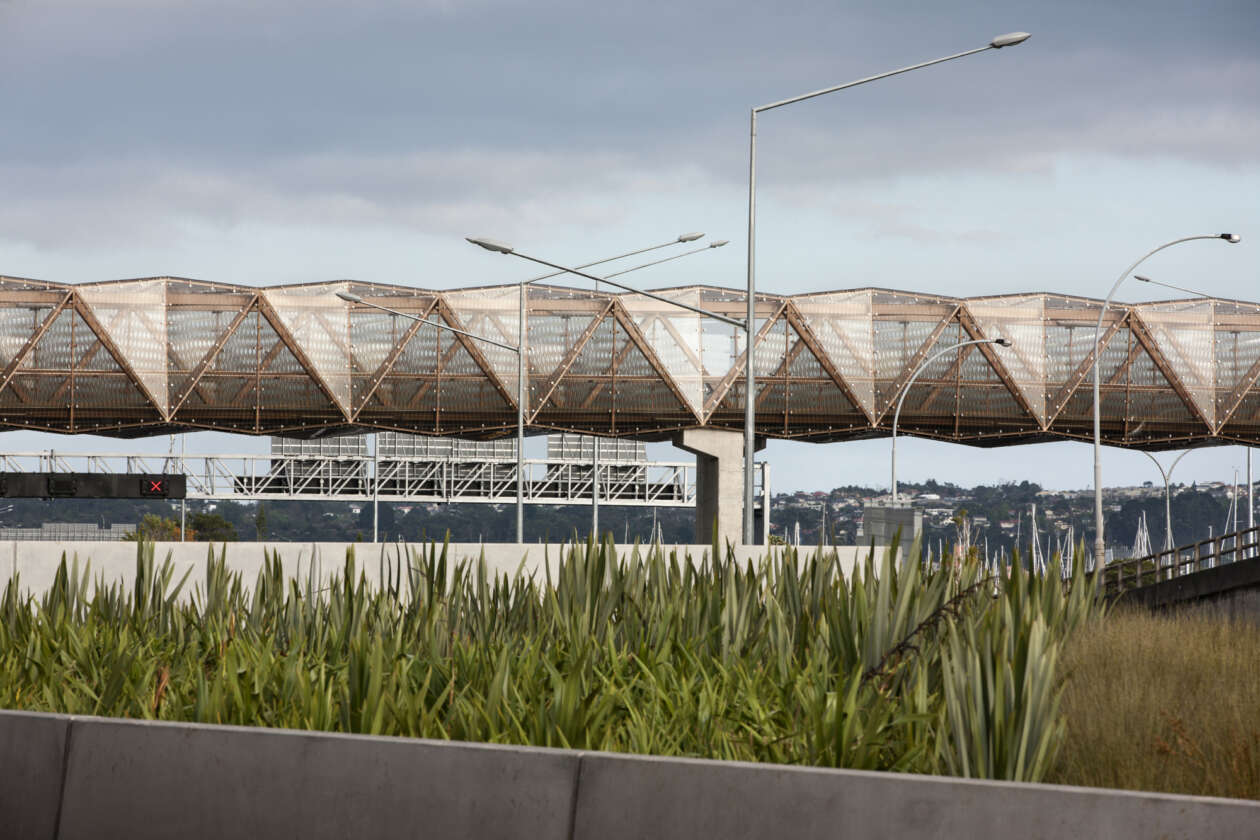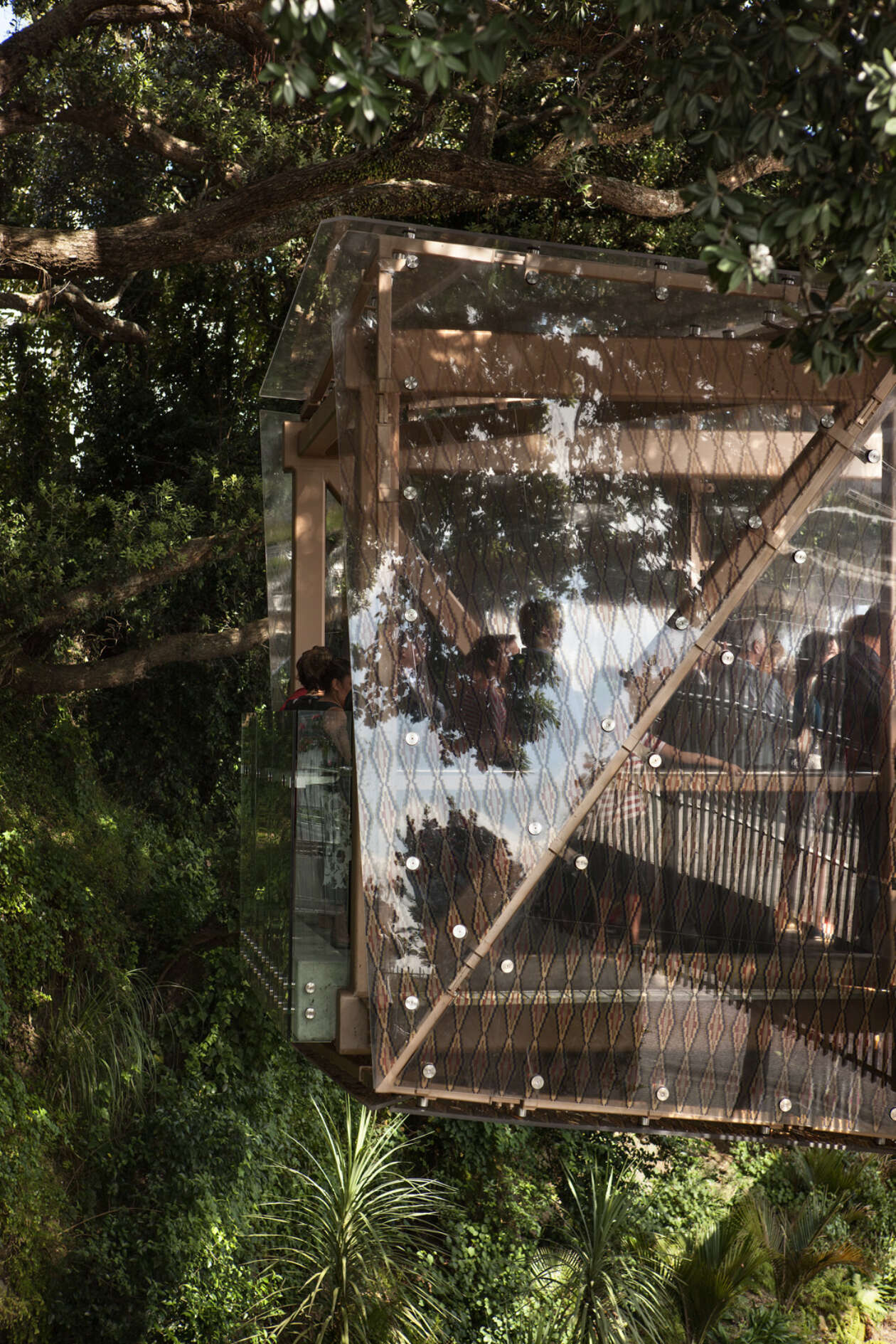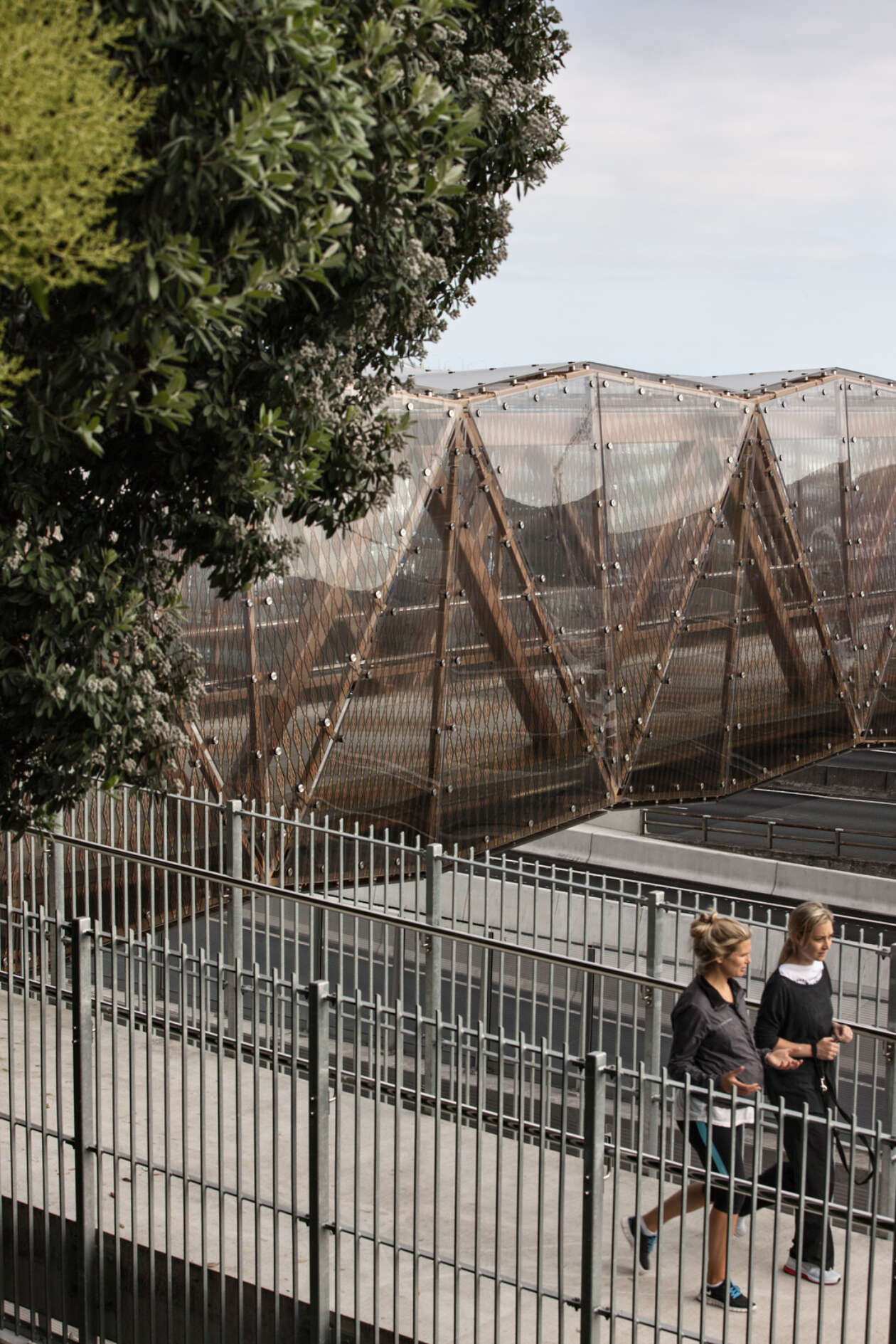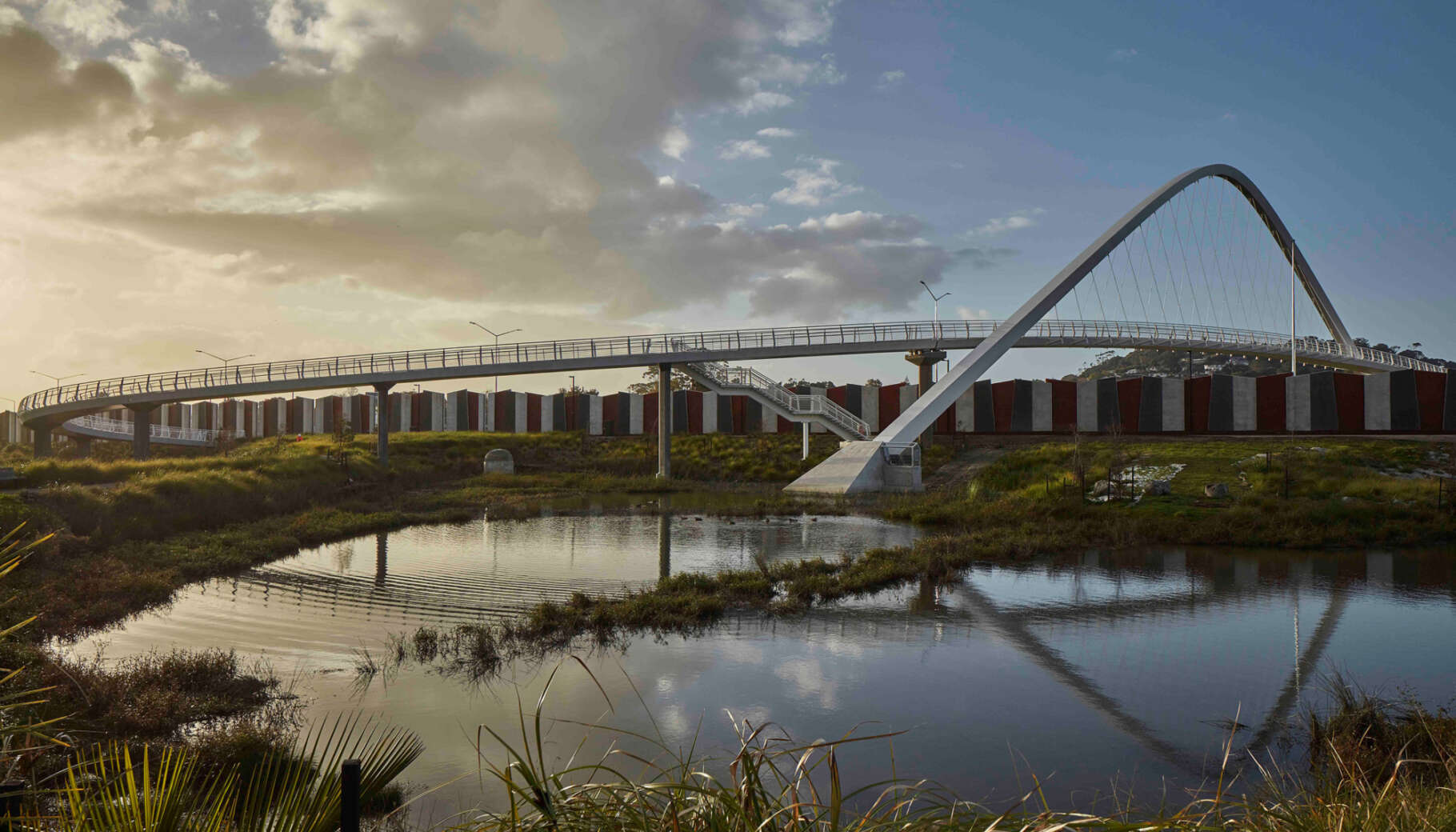Jacob’s Ladder Footbridge
The Jacobs Ladder Footbridge (Te To Bridge) is a key element of the Victoria Park Tunnel project. The urban design brief for the project required a low form sympathetic to its residential neighbourhood context, whilst also forming a dramatic gateway into the CBD from the North.
The bridge was designed as a dramatic and simple four sided form, aligned diagonally across the motorway. Te To Bridge is conceived as a metaphorical Waka landed on Auckland's historical foreshore, enabling a connection from the land to sea. The technology employed, its low profile and large scale; the texture and details; the tukutuku pattern and dawn colours demonstrate the care with which this bridge has been designed and built - reminiscent of the importance and craftsmanship of Waka and boat-building, both historically and today. Historically, Tamaki Herenga Waka was and continues to be the destination of voyagers. It is another name for the Auckland Isthmus which directly relates to Te To Bridge linking the Waitemata foreshore to Te To Headland.
The dynamic and complex acrylic skin – transparent, faceted, and continuous - meets the requirement of the brief for the bridge to be fully enclosed. This skin is covered in a continuous pattern; an artwork developed by Kupenga, an Iwi Artist Collaborative representing local Maori. The image on the acrylic skin encasement is inspired by the Patiki or flounder fish, one of Tangaroa’s children. Its diamond like shape gives it the agility to move fast across the flat waters and with its eyes positioned on top it has an all round perspective. The construction of the pattern relates to Taniko, a traditional hand woven skill used as a colourful band across the top and bottom of a korowai/cloak. As the sun moves across the length of the bridge the tiny eyes and colourful flecks of the Patiki glisten in its rays.
At a distance and at speed the bridge is intended to read as a simple, sculptural and bold form, legible among the complexity of its urban context. For pedestrians and cyclists who use the bridge or pass close by beneath on Westhaven Drive there is a more detailed architectural expression.
Warren and Mahoney was commissioned by NZTA to work alongside Sinclair Knight Merz and Boffa Miskell Ltd.




